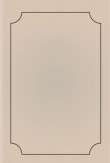You are here
قراءة كتاب Beacon Lights of History, Volume 05: The Middle Ages
تنويه: تعرض هنا نبذة من اول ١٠ صفحات فقط من الكتاب الالكتروني، لقراءة الكتاب كاملا اضغط على الزر “اشتر الآن"
AQUINAS.
THE SCHOLASTIC PHILOSOPHY.
Peter Abélard
Gives a new impulse to philosophy
Rationalistic tendency of his teachings
The hatreds he created
Peter Lombard
His "Book of Sentences"
Introduction of the writings of Aristotle into Europe
University of Paris
Character of the students
Their various studies
Aristotle's logic used
The method of the Schoolmen
The Dominicans and Franciscans
Innocent III.
Thomas Aquinas
His early life and studies
Albertus Magnus
Aquinas's first great work
Made Doctor of Theology
His "Summa Theologica"
Its vast learning
Parallel between Aquinas and Plato
Parallel between Plato and Aristotle
Influence of Scholasticism
Waste of intellectual life
Scholasticism attractive to the Middle Ages
To be admired like a cathedral
Authorities
PRELATICAL POWER.
Becket a puzzle to historians
His early history
His gradual elevation
Friendship with Henry II.
Becket made Chancellor
Elevated to the See of Canterbury
Dignity of an archbishop of Canterbury
Lanfranc
Anselm
Theobald
Becket in contrast
His ascetic habits as priest
His high-church principles
Upholds the spiritual courts
Defends the privileges of his order
Conflict with the king
Constitutions of Clarendon
Persecution of Becket
He yields at first to the king
His repentance
Defection of the bishops
Becket escapes to the Continent
Supported by Louis VII. of France
Insincerity of the Pope
Becket at Pontigny in exile
His indignant rebuke of the Pope
Who excommunicates the Archbishop of York
Henry obliged to compromise
Hollow reconciliation with Becket
Return of Becket to Canterbury
His triumphal procession
Annoyance of Henry
Assassination of Becket
Consequences of the murder
Authorities
Anarchies of the Merovingian period
Society on the dissolution of Charlemagne's empire
Allodial tenure
Origin of Feudalism
Dependence and protection the principles of Feudalism
Peasants and their masters
The sentiment of loyalty
Contentment of the peasantry
Evils that cannot be redressed
Submission to them a necessity
Division of Charlemagne's empire
Life of the nobles
Pleasures and habits of feudal barons
Aristocratic character of Feudalism
Slavery of the people
Indirect blessings of Feudalism
Slavery not an unmixed evil
Influence of chivalry
Devotion to woman
The lady of the baronial castle
Reasons why women were worshipped
Dignity of the baronial home
The Christian woman contrasted with the pagan
Glory and beauty of Chivalry
Authorities
The Crusades the great external event of the Middle Ages
A semi-religious and semi-military movement
What gives interest to wars?
Wars the exponents of prevailing ideas
The overruling of all wars
The majesty of Providence seen in war
Origin of the Crusades
Pilgrimages to Jerusalem
Miseries and insults of the pilgrims
Intense hatred of Mohammedanism
Peter of Amiens
Council of Clermont
The First Crusade
Its miseries and mistakes
The Second Crusade
The Third Crusade
The Fourth, Children's, Fifth, and Sixth Crusades
The Seventh Crusade
All alike unsuccessful, and wasteful of life and energies
Peculiarities and immense mistakes of the Crusaders
The moral evils of the Crusades
Ultimate results of the Crusades
Barrier made against Mohammedan conquests
Political necessity of the Crusades
Their effect in weakening the Feudal system
Effect of the Crusades on the growth of cities
On commerce and art and literature
They scatter the germs of a new civilization
They centralize power
They ultimately elevate the European races
Authorities
GOTHIC ARCHITECTURE.
Roman architecture First form of a Christian church
The change to the Romanesque
Its peculiarities
Its connection with Monasticism
Gloomy aspect of the churches of the tenth and eleventh centuries
Effect of the Crusades on church architecture
Church architecture becomes cheerful
The Gothic churches of France and Germany
The English Mediaeval churches
Glories of the pointed arch
Effect of the Renaissance on architecture
Mongrel style of the seventeenth and eighteenth centuries
Revival of the pure gothic
Churches should be adapted to their uses
Incongruity of Protestantism with ritualistic architecture
Protestantism demands a church for preaching
Gothic vaults unfavorable to oratory
Authorities
DAWN OF THE REFORMATION.
Harmony of Protestant and Mediaeval creeds
The Reformation a moral movement
The evils of Papal institutions
The evils of monastic life
Quarrels and dissoluteness of monks
Birth of Wyclif
His scholastic attainments and honors
His political influence
The powers who have ruled the world
Wyclif sent on a mission to Bruges
Protection of John of Gaunt
Wyclif summoned to an ecclesiastical council
His defenders and foes
Triumph of Wyclif
He openly denounces the Pope
His translation of the Bible
Opposition to it by the higher clergy
Hostility of Roman Catholicism to the right of private judgment
Hostility to the Bible in vernacular tongues
Spread of the Bible in English
Wyclif as a doctrinal reformer
He attacks Transubstantiation
Deserted by the Duke of Lancaster
But dies peaceably in his parish
Wyclif contrasted with Luther
His great services to the church
Reasons why he escaped martyrdom
Authorities
LIST OF ILLUSTRATIONS
VOLUME V.
Roland Calls for Succor in the Battle of Roncesvalles After the painting by Louis Guesnet.
A Reading from the Koran After the painting by W. Gentz.
Mohammed, Preaching the Unity of God, Enters the City of Mecca After the painting by A. Müller.
Charlemagne Inflicts the Rite of Baptism on the Saxons After the painting by Adolph Maria Mucha.
St. Bernard Counselling Conrad III. After the painting by Adolph Maria Mucha.
Canterbury Cathedral From a photograph.
St. Thomas Aquinas in the School of Albertus Magnus After the painting by H. Lerolle.
Murder of St. Thomas à Becket After the painting by A. Dawant.
The Accolade After the



